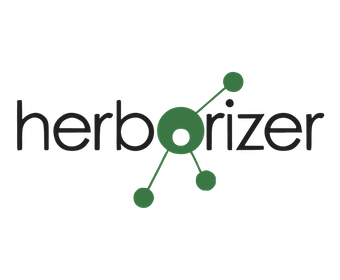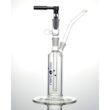The COGS calculation process allows you to deduct all the costs of the products you sell, whether you manufacture them or buy and re-sell them. List all costs, including cost of labor, cost of materials and supplies, and other costs. Goods that were manufactured or purchased first are the first ones to be sold. With FIFO inventory, it means that your business will have to sell first the least-expensive products. Understanding these components helps businesses accurately calculate COGS.
In addition, the gross profit of a company can be divided by revenue to arrive at the gross profit margin, which is among one of the most frequently used profit measures. The formula for calculating cost of goods sold (COGS) is the sum of the beginning inventory balance and purchases in the current period, subtracted by the ending inventory balance. The cost of goods sold (COGS) is an accounting term used to describe the direct expenses incurred by a company while attempting to generate revenue. The balance sheet has an account called the current assets account. The balance sheet only captures a company’s financial health at the end of an accounting period. This means that the inventory value recorded under current assets is the ending inventory.
Other expenses are then deducted to calculate the business’s net profits. While COGS focuses, obviously, on cost, the metric is calculated in a roundabout way. In other words, the formula focuses on the time frame rather than expenses. As COGS is calculated using only direct costs, we should ignore the indirect costs related to these products. So the calculation of Cost of Goods Sold using COGS formula is as below.
How to use the COGS formula
A lower COGS also translates into a higher net income for the period. COGS are usually the second line item that appears in the income statements of companies. You don’t want to get into legal disputes for not correctly filing your taxes. In practice, there are at least four accounting methods for determining COGS. Companies can choose from any of these, but they need to be consistent once they choose. And while it can be difficult for companies to decide, which method they use can have a considerable impact on profitability, as well as tax consequences.
How to calculate COGS without inventory?
- The gross profit helps determine the portion of revenue that can be used for operating expenses (OpEx) as well as non-operating expenses like interest expense and taxes.
- However, it excludes all the indirect expenses incurred by the company.
- This figure is essential for evaluating profitability, both at the product level and across your entire business.
- Businesses can improve gross profit by increasing prices, lowering production costs, negotiating better supplier deals, and optimizing operations to reduce waste.
- At the beginning of the year, the beginning inventory is the value of inventory, which is the end of the previous year.
Because COGS doesn’t include fixed costs, it also doesn’t provide a true reflection of a business’s profitability. For an accounting cost of goods sold formula method that includes fixed expenses, consider cost accounting. Notice that this number does not include the indirect costs or expenses incurred to make the products that were not actually sold by year-end. The purpose of the COGS calculation is to measure the true cost of producing merchandise that customers purchased for the year. The COGS formula is important because it determines the direct costs of producing a certain number of goods during an identified period. This allows business managers or owners to make important financial calculations, such as understanding the gross profit and cost of inventory during that period.
For a courier firm, the basic service is to route packets from their customers to appropriate destinations. Consider, company XYZ is a courier firm, which picks up consignments from their customers and then connects it further for the right delivery. The choice of inventory method reflects management’s judgment on how to best represent the company’s financial performance and position. In the final step, we subtract revenue from gross profit to arrive at – $20 million as our COGS figure. If a company orders more raw materials from suppliers, it can likely negotiate better pricing, which reduces the cost of raw materials per unit produced (and COGS). The categorization of expenses into COGS or operating expenses (OpEx) is entirely dependent on the industry in question.
There are one of three methods of recording the cost of inventory during a period – First In, First Out (FIFO), Last In, First Out (LIFO), and Average Cost Method. The opening and closing inventory levels directly impact COGS, changes in inventory levels affect the cost allocation and, subsequently, the reported profit. Encompasses all non-production-related expenses incurred in normal business operations. When use properly, however, COGS is a useful calculation for both management and external users to evaluate how well the company is purchasing and selling its inventory.
Company
- Ending inventory costs are usually determined by taking a physical inventory of products or by estimating.
- These are all questions where the answer is determined by accurately assessing your COGS.
- Imagine knowing exactly where every dollar goes—sounds empowering, right?
- In other words, this is the amount of money the company spent on labor, materials, and overhead to manufacture or purchase products that were sold to customers during the year.
- COGS counts as a business expense and affects how much profit a company makes on its products.
Under the matching principle of accrual accounting, each cost must be recognized in the same period as when the revenue was earned. Given the issues noted here, it should be clear that the calculation of the cost of goods sold is one of the more difficult accounting tasks. Levon Kokhlikyan is a Finance Manager and accountant with 18 years of experience in managerial accounting and consolidations.
What is the difference between gross profit and gross profit margin?
This can help you stabilize your business’s COGS over time, from an accounting perspective, reducing the impact of single purchases. Below, we define COGS, discuss the specific expenses that are typically included, and provide a formula you can use to calculate your business’s cost of goods sold. We also walk through different accounting methods and how they can impact cost of goods sold, and compare COGS to other financial metrics that it is often discussed alongside. Generally speaking, only the labour costs directly involved in the manufacture of the product are included.
Cost of Goods Sold (COGS) represents all costs involved in producing goods that a company sells over a certain period of time. Cost of goods sold, often abbreviated COGS, is a managerial calculation that measures the direct costs incurred in producing products that were sold during a period. In other words, this is the amount of money the company spent on labor, materials, and overhead to manufacture or purchase products that were sold to customers during the year. Cost of goods sold (COGS) refers to the direct costs of producing the goods sold by a company. This amount includes the cost of the materials and labor directly used to create the good. It excludes indirect expenses, such as distribution costs and sales force costs.
The store’s owners could use COGS to determine their total cost of inventory sold over the year — a key number in determining their overall profitability for the year. Of course, the formula for COGS also gets a bit more complex if you’re doing your own manufacturing. There may be other costs involved like traveling, administrative, selling and marketing, etc. Includes operating expenses beyond production costs, such as marketing and distribution.
Using the average cost methodology, the COGS calculation is smoothed out over that time. This means that spikes or drops in demand and purchasing costs do not have an unjustifiable significant impact on the final figures. Using the average cost methodology, the COGS calculation is smoothed out over that time. In this article, we’ll break down what COGS is, why it’s vital for product-based businesses, and how to calculate it using the cost of goods sold formula. The average cost method aims to eliminate the effect of inflation by valuing inventory based on the average price of all goods currently in stock. This has the added bonus of smoothing out the effect of significant ad hoc costs.
With accrual accounting, you record costs as soon as they have been fixed (or you can estimate them reasonably accurately). Similarly, benefits are recorded as soon as they have been earned (for example, you dispatch an invoice). This approach is more complicated but can offer a much more accurate picture of a business’ performance over time. Since the Cost of Goods Sold formula calculates the cost ONLY for the items sold, we should not add shipping charges for the 30 laptops in the warehouse.
Additional Direct Costs are the costs you incurred over and above what you paid to the suppliers to get your product ready for sale. Ending Inventory Value is the total stock level at the end of the period you have selected. Beginning Inventory Value is the total stock level at the start of the period you have selected. So inventory is either being procured, processed, or being shipped out.







